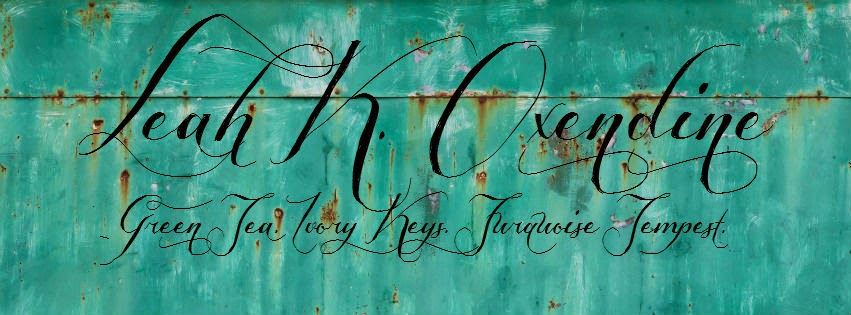Hello everyone, here is a post I wrote in February 2011, a revision from an article I'd written wayy back in 2009. Hope y'all enjoy!
Corsets (Revised Version)
By Leah K. Oxendine
What fashion garment had played a major role in womens' dress for centuries, its purpose staying the same, the whole time? And this particular accessory.... just where did it originate? Who has it been used by? What should our view be towards it? Very likely, by now, (and hence from the title) you know that this fashion garment that I'm referring to, is the corset. What other clothing addition has been so popular, so accepted to one's wardrobe? For all the way up until the 1930's and 40's, corsets had been used. And even today, renditions are used. Simpler, lighter and more practical 'corsets' are used (at times) in weddings, and other formal events. Corsets are used practically all the time in reenactments, and a lot of the time they are considered just a part of the outift, no questions.
During the 1700's and 1800's, corsets were called "stays". The origin of the word comes from "to support".
When I first wrote the Corsets article, looking back, my writing skill in the article and my perceiving of the topic was not as seasoned or learned. I wrote things that I happen to disagree with, now, after more research on the topic. For example, I wrote that "there is merely one purpose of a corset/stay, overall." Well, yes, in some ways that could be said to be true; BUT I did leave out another factor very worthy of consideration. While I said that "...it(the corset) is based upon vanity; the desire to make oneself more attractive" there is yet a practical, yet surprising use for the corset which I deemed a thing of frivolousness.
What might this use be? The answer is only but 2 paragraphs above. What made the corset a helpful thing in a ladies' dress was how it acted as a support for the wearer's back, when she donned many heavy layers of skirt and petticoat PLUS the hoopskirt.The hoop itself truly did need something underneath to keep it from potentionally damaging the wearer's back and posture, which it would certainly do if not for extra support around the waist area. It needed something to help hold up all the weight of the skirts and petticoats, which the corset helped do pretty well.
So, while the corset could be seen as pure vanity, it did play a decent role as a back/upper body support mechinism.
Yes, many women of the 1600's and centuries after added another troublesome chore to their life by constantly wearing the uncomfortable corset. If I were to wear one every day (and I had the chance to do so several years ago, for about 3 years. Not pleasant!) I'd get real tired with the thing. (which I did!)
Laura Ingalls Wilder, in her early teens, wore one because of her mother Caroline's wishes. From what I have further read about 'Ma', she was a woman who believed in following the fashions. She was a lady who stuck to the rule of the book. She told Laura about how when she had been just married to Charles, "he could span her waist with his two hands." I think Laura never cared for the actual, individual fashions, but she did want to be fashionable.
By the middle of the 16th century, corsets were commonly used garments among women. These stays were made of stiffened multiple layers of linen with wooden busks or shafts inserted in a pocket at the front in order to keep the corset and figure straight. But long before this time, even traveling back to the time of the ancient Egyptians, you could find something serving to flatter the figure. So, finding the corset's origin proves rather difficult.
The first mention of what may rightly be termed the corset is at the end of the fourteenth century. yet, as I said before, tracing the origin of corsets down to where they first appeared is extremely difficult.
Women have always seeked to beautify themselves, that is just in our nature. We have been made with a desire in our hearts to be beautiful. There is also a nature within us to spend far too much time over our personal health and beautification. This is a producer, yet also a product, of vanity. Continuing in the above manner,(spending hours on your hairstyle and spending many a minute tightening your girdle (for the women of centuries past) etc.) produces more of a vain heart than ever, for since you spent so much time on yourself, you care very much of what people think of you, how you appear to others.
Either way, the corset is and was a thing worn by ladies who cared much for what other people thought of them. They wanted people to think they were attractive, or in Mrs. Caroline Ingalls' case, they wanted to fit in with the others, go along with the current fashions. While the corset could be used for back support, the only reason it might be used for that was if one would wwear a hoopskirt-- another thing of the fashions.
I can tell you I do know a bit about what a corset would feel like. As I said earlier on, I wore a 'corset', in actuality, a scoliosis spine brace, made of thick plastic. I used to have to wear it nearly all day, in order for my spine to straighten. (Praise God that it has!)
I wonder... if many of us decided to try out such a thing as a corset, say for a YEAR or so, how our opinions of it would change? Now that would be an interesting study. Think you'd be up to it?
Sincerely,

